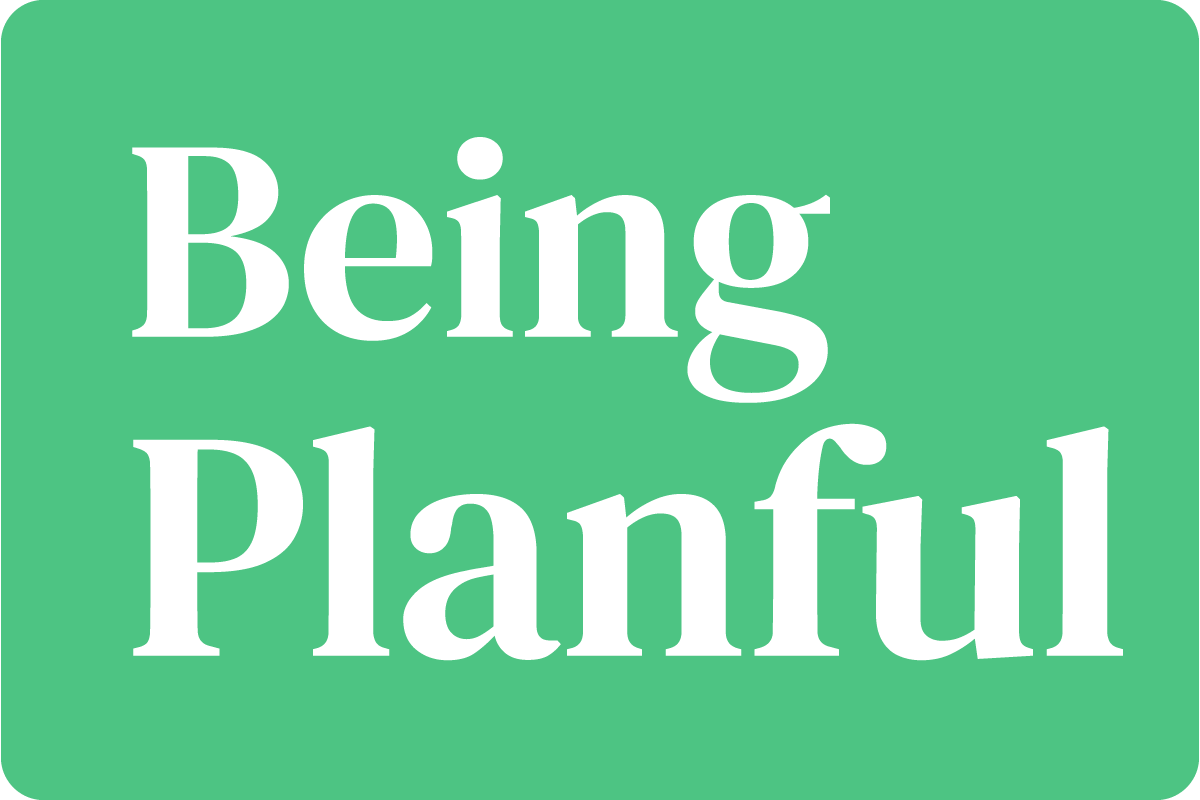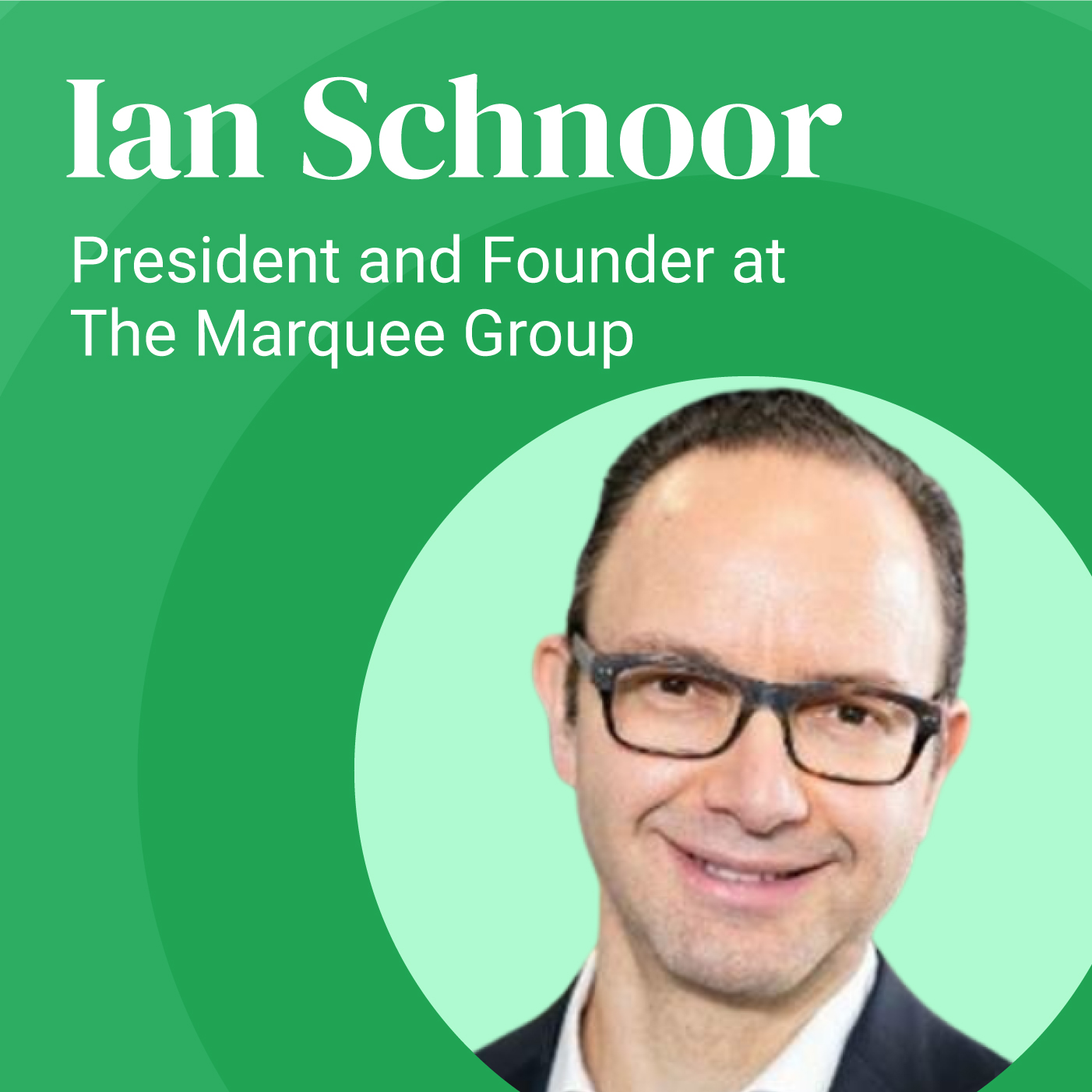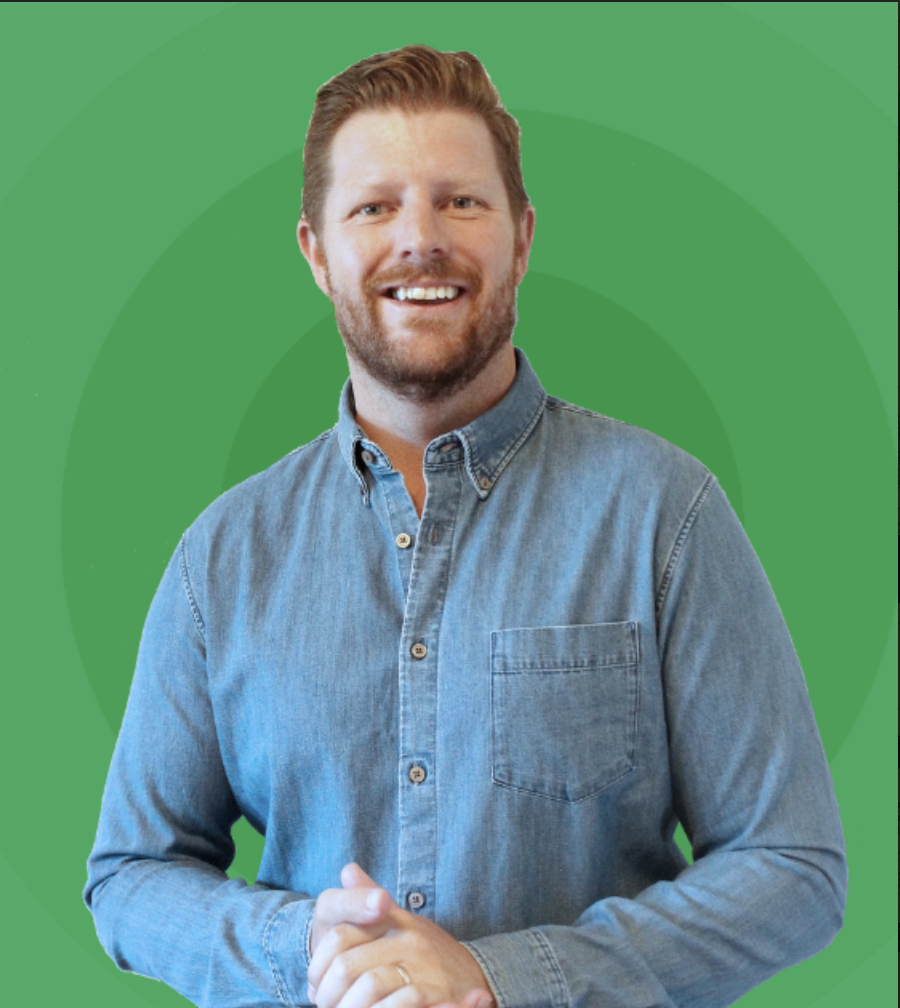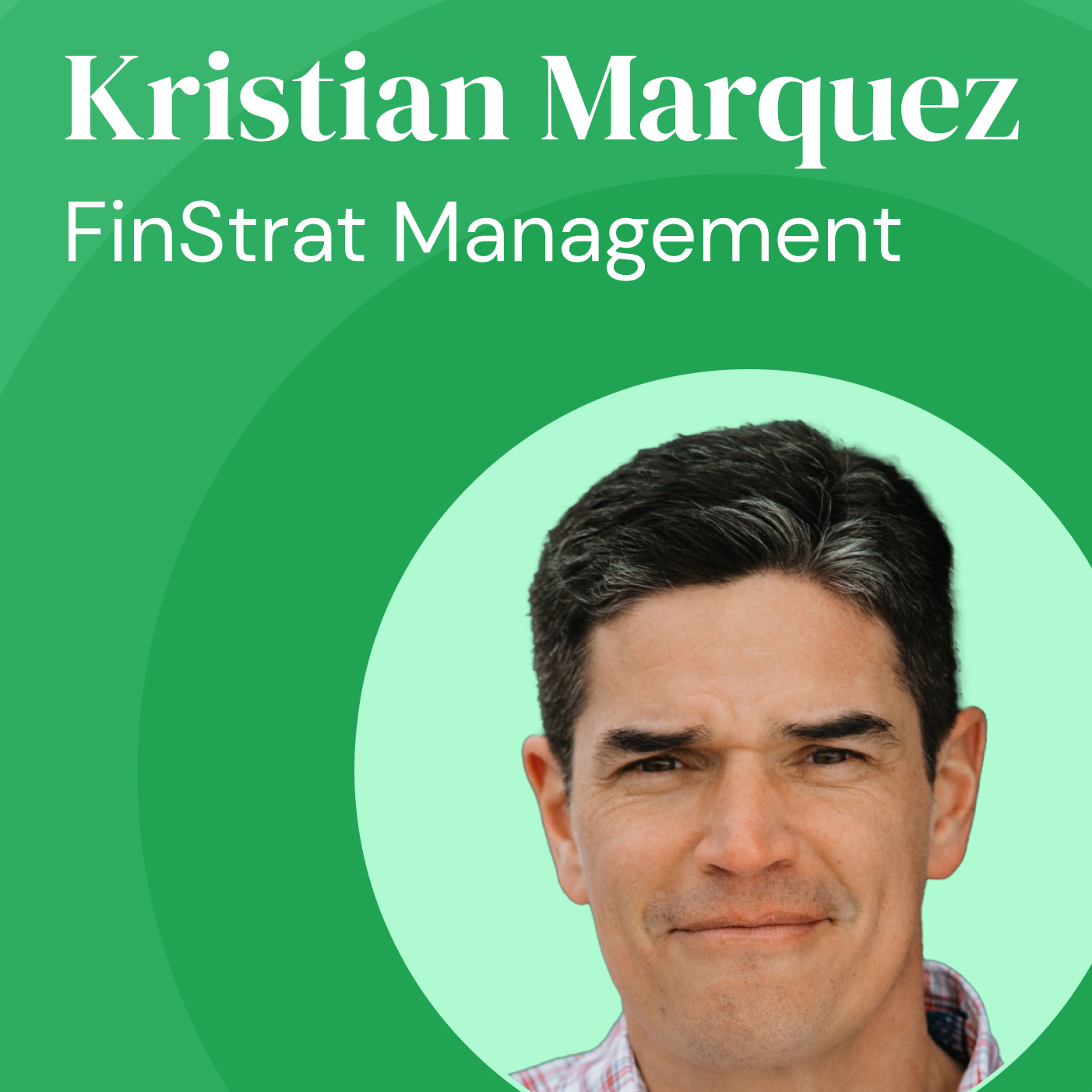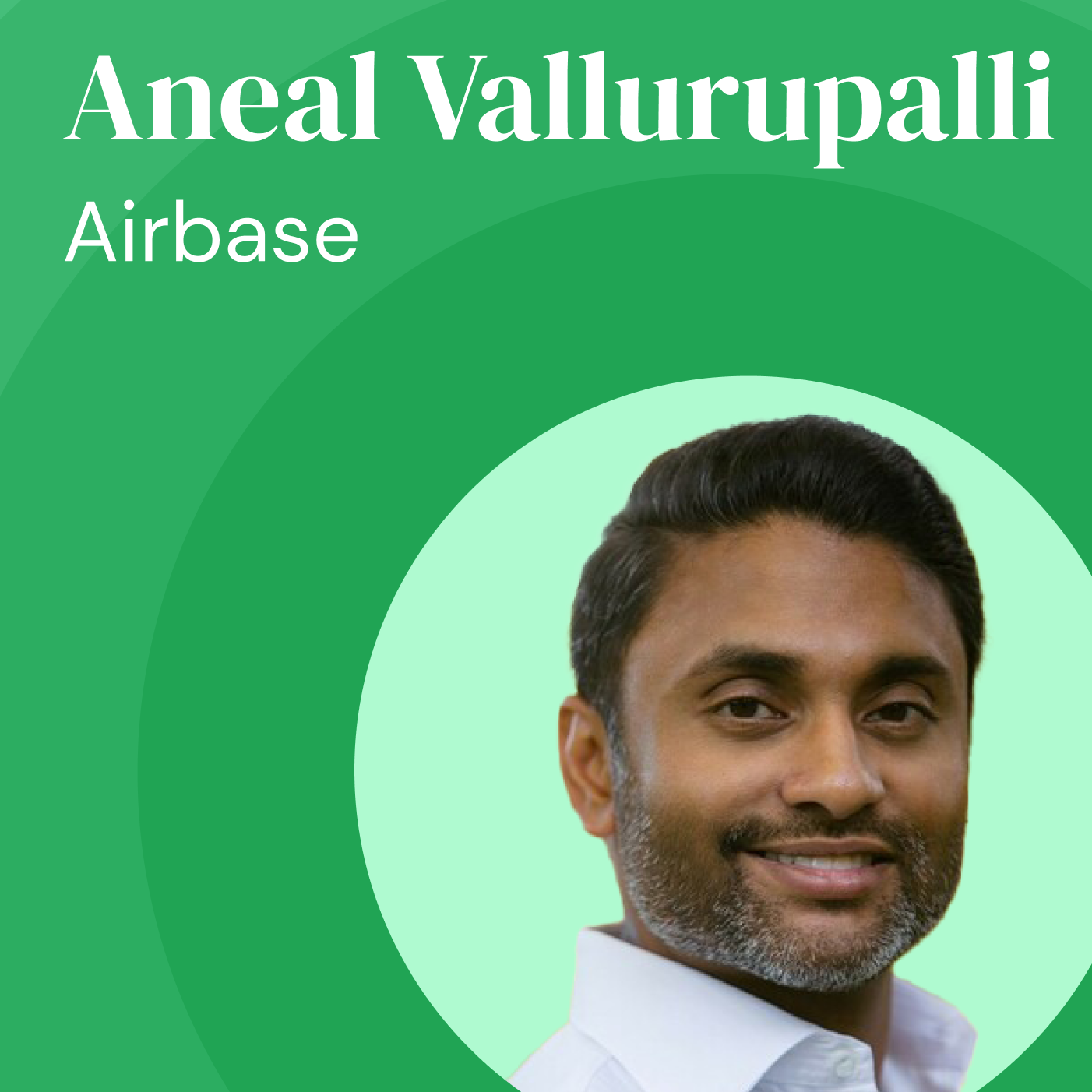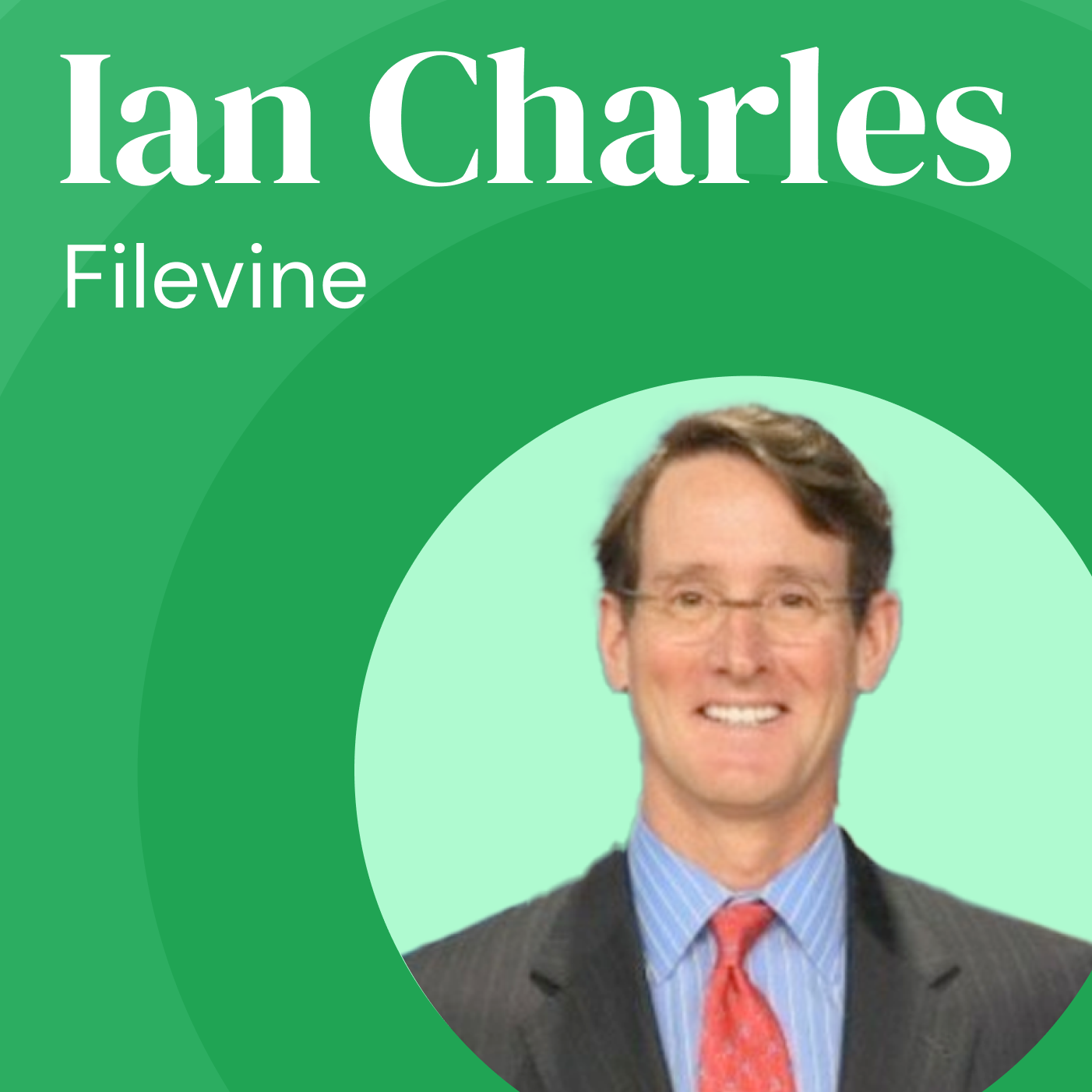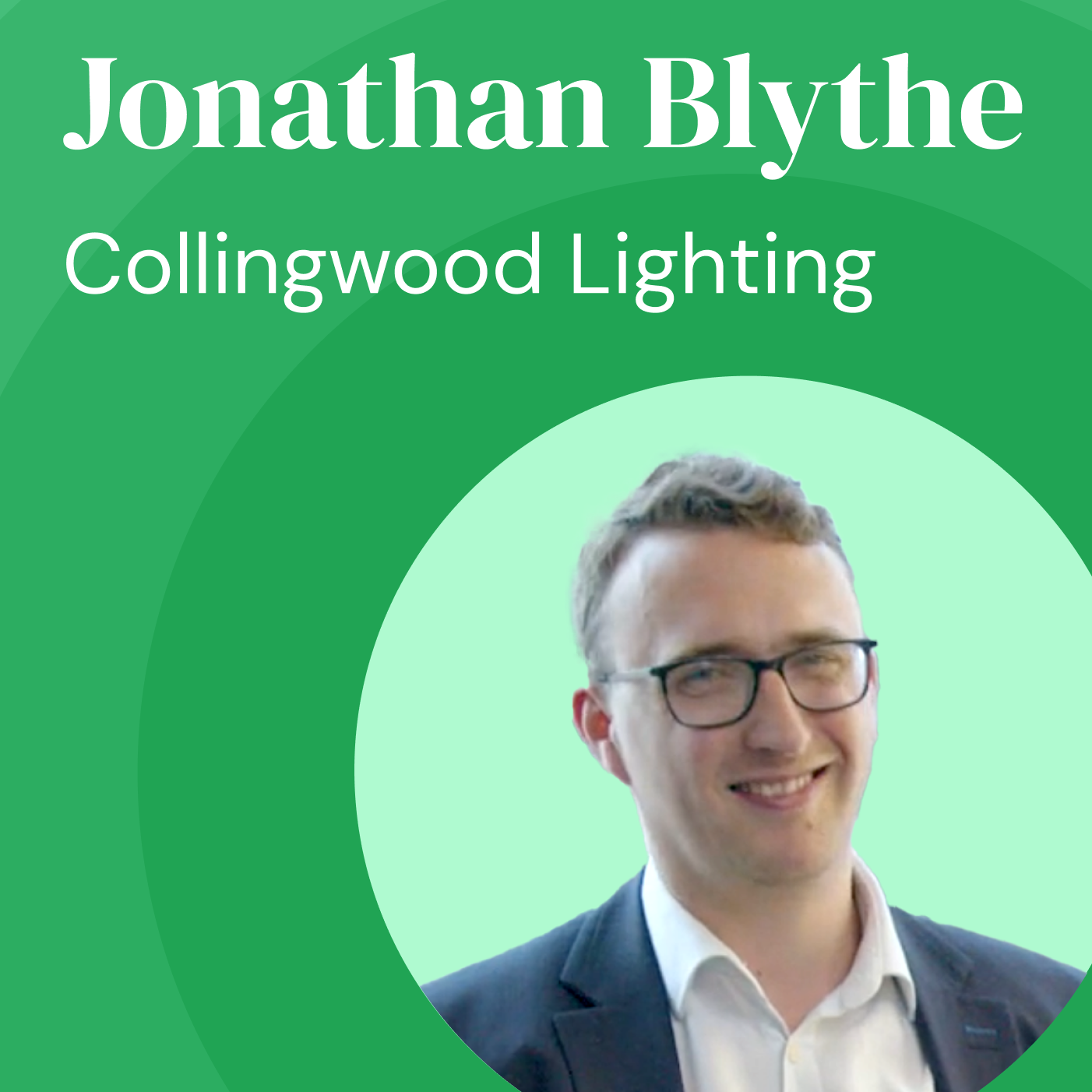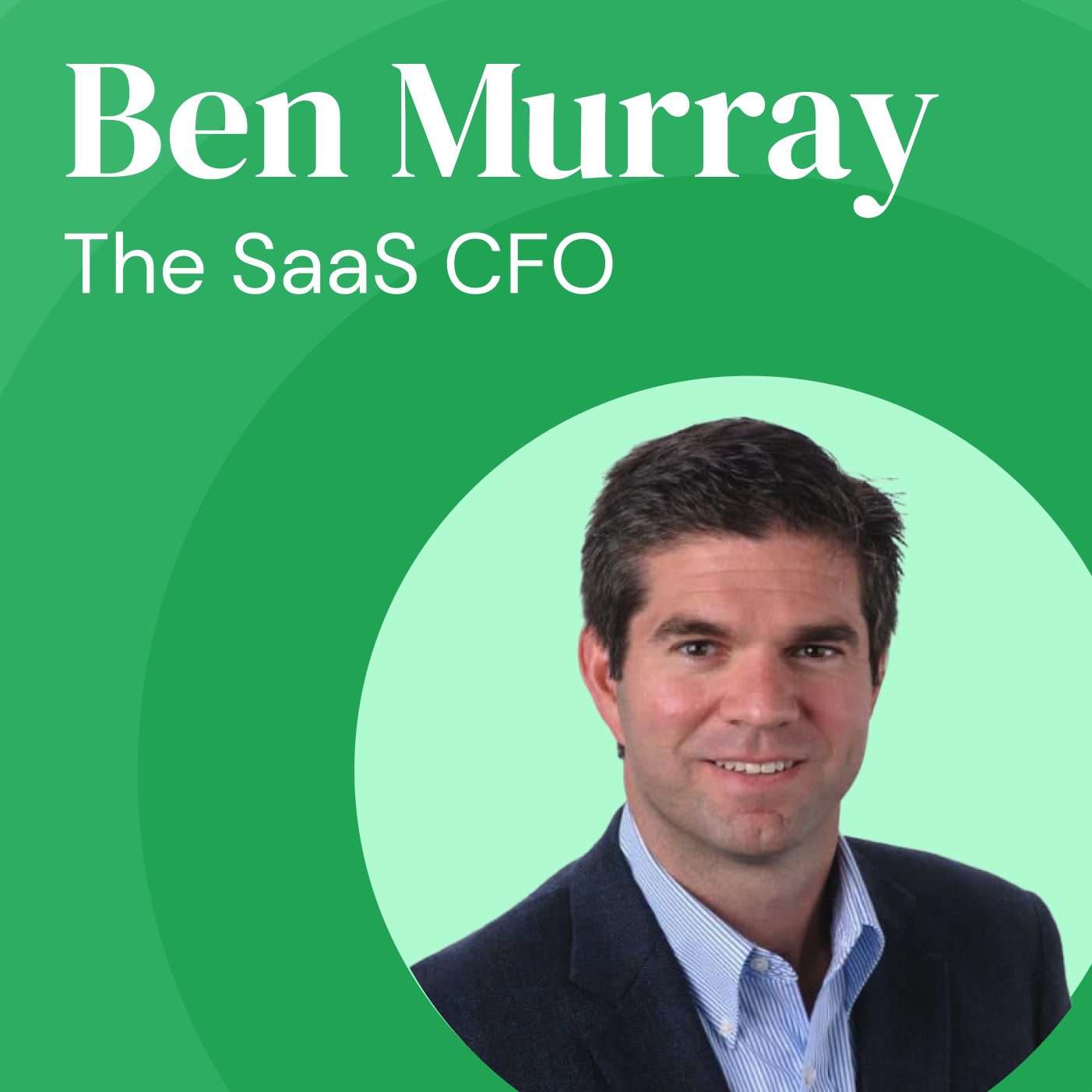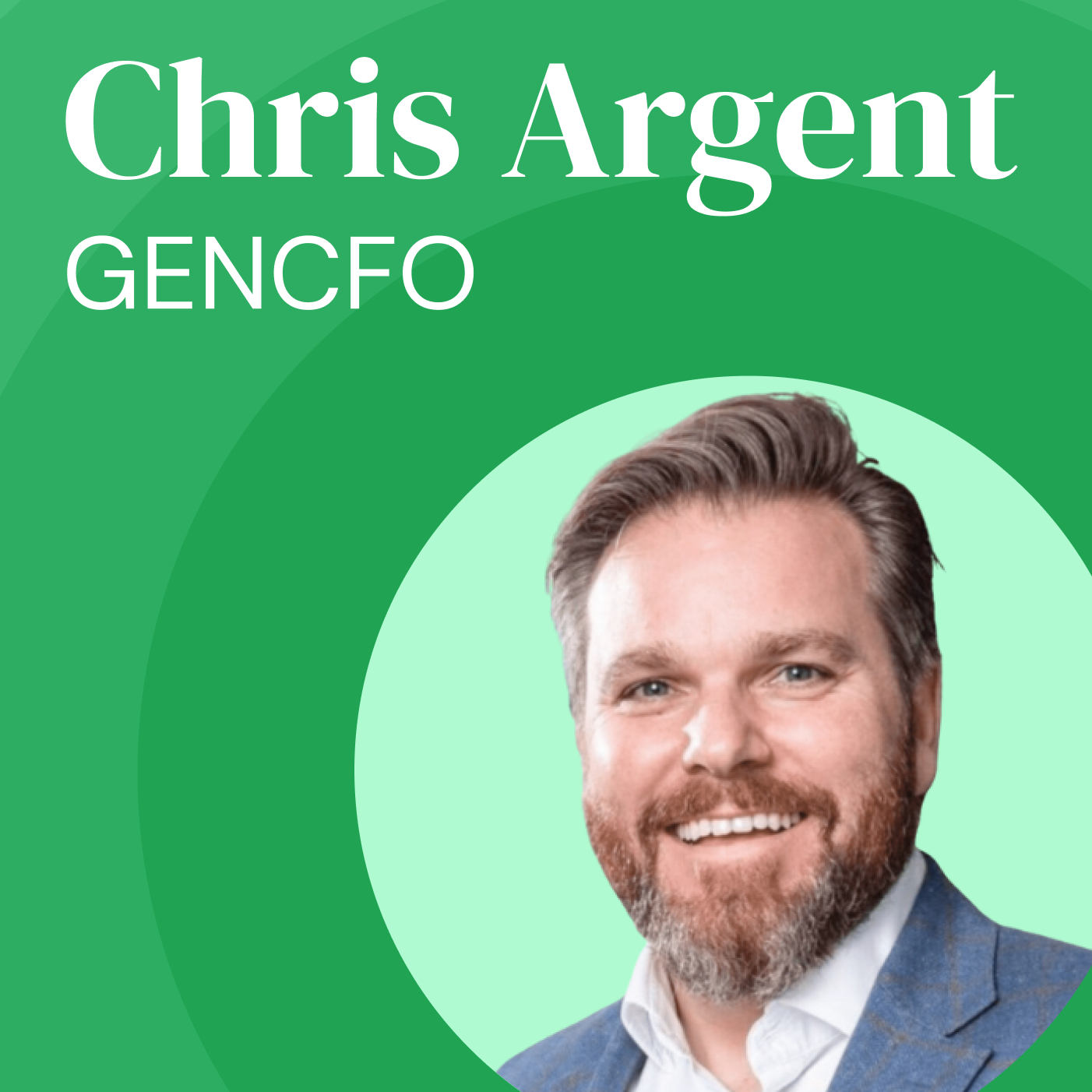Level Up Your Financial Modeling | Ian Schnoor
- 0.5
- 1
- 1.25
- 1.5
- 1.75
- 2
Rowan Tonkin: Hi, I'm your host, Rowan Tonkin, and welcome to Being Planful, the show for FP& A leaders and planning experts. Hi, everyone, welcome to Being Planful. As you know, my name's Rowan Tonkin, I'm the CMO here at Planful. And I'm fantastically pleased to introduce you today to Ian Schnoor. Ian is the President and Founder at The Marquee Group and also the Executive Director of the Financial Modeling Institute. Ian, welcome to the show.
Ian Schnoor: Thank you, Rowan. Really thrilled to be here, thanks for having me.
Rowan Tonkin: So firstly, let's get a bit of an understanding of what is the Financial Modeling Institute and why does it exist?
Ian Schnoor: Well, that's an excellent question. It exists because financial modeling has become a skillset of increasing importance. It has become more and more important over the years. And as a result, a bunch of us globally felt the need to build this. What it actually is an accreditation organization. Think of it like CPA or CMA, an accounting accreditation body, or ACCA globally. We have a big partnership with ACCA. We are offering the world's first ever rigorous challenging financial modeling exams. So people can prove that they actually have exceptional financial modeling skills.
Rowan Tonkin: So obviously that's important, when we're talking about the world of financial planning analysis. Which many of the listeners and the viewers of this show are in the space of FP& A. They want to be able to say," Hey, I have a special set of skills that helps me get paid more." But also, it helps them drive better business outcomes and become a better business partner to their constituents. Talk about some of the parts of the certifications or just parts of the process that actually help them move the needle in their day to day job and why that's important.
Ian Schnoor: Well, sure. Let me just start by saying, so it's a three level accreditation program and the very first level is called the AFM, the Advanced Financial Modeler. That's all about building a... so when we talk about financial modeling, we are referring very specifically to forecast modeling of a company. I mean, it could be a project or a division, but we're forecasting a company. I say that just to distinguish people sometimes think of modeling as data analytics or graphing. No, we're focusing on forecasting. Very much the same type of forecasting as you would do in FP& A, in planning. And we're using spreadsheets, we want to test people's skills to build a really robust, best in class forecasting tool in a spreadsheet. So how is this relevant then to people who use software? Because there's some amazing software, like your software, out there that allows people to assist with their forecast. I think it's genius, it's beautiful, I'm a big fan of it. But they are not mutually exclusive. There is a place for both of them. I can tell you that financial modeling has become one of the most important skills in the world of accounting and finance these days. We're seeing an enormous amount of interest in demand. Well, I ask your watchers or your listeners, has anyone ever seen a job posting? And the job posting said, we're looking for people that have an accounting designation or maybe CFA. But also... have you seen this? We also want people that have strong financial modeling skills. That's pretty new. In the last five to 10 years, people are saying," We want people with strong modeling skills." You never, never saw that before then. It's because it's becoming a critical discipline. So it goes hand in hand, the software is fantastic. It allows you to do your work quickly, but there will always be opportunities when you have to run a one- off analysis or where you're looking at an acquisition opportunity, or you're looking at a divestiture or something that is not built into the software capability and you need the ability to build a beautiful clean forecast model for that situation.
Rowan Tonkin: Yeah, I think that is a really important distinction. One of the ways that I think about it is, once you can build that clean model, that's when you often want to transfer it. And you can repeat and reuse and build the structure and build the rigor into a system so you can scale it. Whereas often you might just have a one off, it's kind of personal productivity, I need to do it quickly in a spreadsheet and then just share it with one person. And that's the extent of it. When you're building out a full forecast process, like your sales forecast or a revenue forecast. That needs to be systemic and scaled through the organization-
Ian Schnoor: Correct.
Rowan Tonkin: That's when you want to use a system because-
Ian Schnoor: Totally.
Rowan Tonkin: Security, all of those sorts of things. But when you're really just looking at, all right, I need to do something quick, like an M& A opportunity. If you haven't made a systemic process for that in your business, and it is a one off. Then that's where a spreadsheet obviously does work.
Ian Schnoor: 100%. There are a million one- offs that we all do. I totally agree with perfectly everything you said. Doing with your annual, your quarterly, your monthly global system wide processes to plan forecast. Yeah, beautiful to do that in a piece of software. But when the CFO says," Hey, can we look at this organic investment in a certain new piece of machinery?" Or," I want to look at changing the way we do something." Or," Let's evaluate this or change that." I mean, maybe some of you're listening and laughing, because you get asked those sorts of one offs all the time. How many of you get one off requests regularly? Those things need to be built somewhere outside of your typical FP& A plannings tool.
Rowan Tonkin: And so when we are doing those one offs, what are the key things that are really important from a modeling perspective that you should really be thinking about so that you don't end up either making a mistake or having the inability to scale that type of model.
Ian Schnoor: Yeah, sure.
Rowan Tonkin: What's some of the key tips that you would give folks?
Ian Schnoor: Yeah, sure. I'll show you a couple. That's a dangerous question because you told me we have 30 minutes and I could go for about 10 hours to answer that question. I guess, let me back up by saying that at the Financial Modeling Institute, our strong belief and my strong belief, I mean, I've been teaching modeling and involved in modeling for 20, 25 years. First of all, modeling is its own discipline. You asked earlier, what can people do to put on their resumes to distinguish them? Well, it's nice to say you can run and know how to use a piece of software. Sure, like Planful software. But it is a separate thing for your resume to say," I have tremendous modeling skills." Because what it means is it means you know how to think and it means how to communicate. I actually tell people... whenever people think of modeling, they think of being in a dark room in their basement, like beside a boiler, working on a spreadsheet all hours of the day. That is the last thing I want people to think of. I ask people to sometimes guess what I think the most important skillset is to have or when you are building models. Modeling is very multidisciplinary. So yes, you need to have good accounting skills and good finance skills and good Excel skills, spreadsheet skills, and good design. But perhaps the most important is thinking about how to communicate and how to tell a story. Because if your spreadsheet doesn't make sense and no one understands it, you're not going to be able to make a decision. You're going to need to make a critical decision on the back of that tool that you've built and if people don't understand it, they won't have the confidence to use it. So I mean, there are dozens of tips that I share with people and this is what we teach people through the Financial Modeling Institute and then test them on our exams is, can you build a beautiful best in class model to make an optimal one off type of decision of something? Things to think about, I mean, you've asked for kind of tips. Things to think about include the orientation. I'll share words that your listeners or reviewers have seen before in a spreadsheet is how do you structure the file? So as an example, there are two classic ways to design a model where you're forecasting something. One is using what's called a horizontal orientation, where every piece of the model lives on its own separate sheet. So I call it horizontal because you've got lots and lots of sheets. How many of your listeners have ever seen a spreadsheet with 30 or 40 or 50 sheets in it? I'm sure you've seen that, as well, Rowan. I had a world record a couple years ago, we worked for a client. They brought us in to help fix a model that they were working on or to look at it. They had built their own internal forecasting tool on... drum roll... 113 sheets. There was 113 sheets in the Excel file. Can you imagine? inaudible any of your listeners. So the problem is, that's what we call a very horizontal tool. Sounds like a disaster because what of course happens is every formula is crisscrossing and linking to sheets, it's impossible to navigate an audit. There are some benefits at times to building horizontally. Of course, the other approach is building a vertically, where you have a lot of pieces on similar sheets. Our recommendation is to try to keep a lot of pieces in a model oriented vertically. Just think about a set of financial statements. A set of financial statements always talk to each other. The income statement starts with revenue ends at net income. Well, net income is the first line on a cash flow statement. So it can be like a waterfall. The cash flow statement ends with ending cash. Well, the first line on a balance sheet is ending cash. So if you keep things oriented vertically, it's actually really clean and beautiful. But very often people put all their financial statements on different sheets just because they just think that that's a better way, they never really thought about it. So a lot of tips like that, that help people create really dynamic, robust, usable, better tools.
Rowan Tonkin: Yeah. I think one of the challenges there is people are solving for two different things. How do I want to build this? And how does someone want to experience this on the outside? You obviously see the horizontal being," Oh, I can see the tabs, I know to click there." That's me designing for user experience versus me designing for myself, who wants to build it in this way. So obviously there's a big skill set involved in understanding both sides of that. As the person building, how do I want to build? Versus how do I want to present and share this information?
Ian Schnoor: I feel like we should recruit you to the FMI. I mean, after this is over. You are speaking like a true modeler. No, you're absolutely right. Every good forecasting tool, every good modeling tool that you build needs to have multiple users in mind. Very often people build the way someone wants to see something, as opposed to the optimal architectural design. I'll give you a very simple, simple example on that. Well, first of all, so what we always say is, a good model should have an executive summary, a one page summary sheet. Because the very first thing that the client or the user wants to see is the answer. So let's take the summary of all the critical outputs and summarize them up front. So the very first thing someone sees is," Hey, what's the answer to this problem?" Most models don't do that. So the user is left to discover and sift through and hunt. They have to hunt for what they need. So again, people want to see something upfront, but it's the last thing you should build, but we need to put it there because a user is going to want it. So we have to think about that, keep in mind.
Rowan Tonkin: Yeah, absolutely. That comes back to something that you said earlier, which is why do we build a model? Well, it's to make a decision.
Ian Schnoor: To make a decision.
Rowan Tonkin: It's to inform someone of something.
Ian Schnoor: That's right.
Rowan Tonkin: You can shortcut that process by building the summary and having the decision or at least a recommendation in there. And also showing the assumptions that you might have gone through. Often, that can be driver based.
Ian Schnoor: I swear, we have to talk offline after. Yeah, I can tell you when we talk about modeling flow, model flow is critical. Because model flow reflects communication theory and how people think and how people want to absorb data. So as an example, if I was going to build a financial model for, let's say, Planful, for your company. It might end up being in Excel, it might end up being a long model, it might end up being 20 or 30 or 40 pages, think of it on inaudible. I'm going to be forecasting revenues and costs and income tax and working capital. So that might take a while. But when I think about... let's say you're the CEO, I'm presenting to a senior executive. Let's think about what they want. What they want to know first off, I promise you, is they want to know, what's the answer? I've asked you to build the model for a certain reason. Is it because I want to buy the company? So then I need to understand valuation. Is it because I want to extend a loan? Then I have to understand credit ratios and cash flows and risk. Why are we building the model? Let's answer that. So the very first thing you want to show the reader is the executive summary, that lets them say," Ah, I can see the answer." But then as you said, the next thing every human wants to know after is as soon as they absorb the answer, they will always say," Great, how did you get there? What decisions did you make to get there? What did you assume about inflation? What did you assume about interest rates? What did you assume about our sales volumes?" And most of the time, those data points are scattered in 5, 000 places throughout the spreadsheet. That's not helpful. So we strongly encourage people to have a really well designed assumption section upfront. So, that's becomes its own tab, the second tab. And you list very nicely and cleanly, all the inputs. Because the reader wants to know, what's the answer and how did you get there? I'll tell you a secret. If you do a really nice job building your model with optimal flow, by the time the reader finishes reading the executive summary and then a few pages of assumptions, they're usually done. They want to put it down. The model builder often says," Wait a second, I have 40 more pages to show you." They're like," That's fine. I don't care. I get it. I understand it. I don't need to crawl through every calculation because you've delivered it in such a helpful way.:" So, that is kind of what we're trying to achieve. The analogy I like to use is a good model should be like a nice car. What's the most valuable? What's the most difficult, expensive part of any car? Probably the engine. At least in a traditional gas fired car. I mean maybe different in an electric vehicle. But think about a traditional car, the most valuable part is the engine. How often though, do you pop the hood and look at it? Never. You don't want to go look at it. But if you're sitting in your driver's seat, you have all the information you need, you can control it and you can figure out how things are working. We need to achieve the same experience in a model.
Rowan Tonkin: I have plenty of friends where the first thing that they want to do when they see a car is pop the hood. And I also have those same friends that want to pop the hood of every model, too.
Ian Schnoor: Good. But let me ask you, even the friends... this is a great analogy. Even the friends of yours that are capable of popping the hood and understand what's going on. Tell me though, would they be frustrated if they had to pop the hood every time they had to drive the car because something was wrong? If every time they went for a drive, they had to slide underneath, pop the hood, fix something. They'd probably get frustrated pretty quickly.
Rowan Tonkin: 100%. They want to look at it for its beauty and admire it and know how powerful it is.
Ian Schnoor: Right.
Rowan Tonkin: But they don't really want to be tinkering with it, changing it, finding faults in it.
Ian Schnoor: That's exactly the same as a model. Most people like me, want to jump into a car or a model and not have to worry about the engine. But those who can appreciate the beauty of it, might like to be able to crawl through it and say," This is awesome." But I don't want to have to go there to fix it every time I drive the car. I can look at something if I need to, but don't make me have to change a hose or something, a belt, every single time I have to drive the car. Because then I'm just going to get annoyed.
Rowan Tonkin: Yeah. Could not agree more there with you, Ian. So let's talk about something that when we are... if car inclined, you generally know the places to look for faults in the car. It's start a motor, it's check the oil or it's a drive train type of issue. Where are the common faults in most models?
Ian Schnoor: Well, you've asked an excellent question and I actually see your question is sort of a two stage. A good car has been built and designed for me, someone who's not particularly comfortable. I mean, I can pop the hood to fill up the windshield wiper fluid and to maybe check how my oil's doing. But don't ask me to do a whole lot more than that. If I'm in my drive seat, I know that the oil is low. Because I get a warning light. I would know if my car's overheating because there's a gauge. And a good model, first of all, should tell me the same thing. So in a good model, when someone builds the assumption page, think of that like the dashboard in your car. That's where you can play with all the controls, the velocity, how quickly it's going, all the assumptions. But it's also nice to know some red flags," Hey, shoot, you're tripping a debt covenant in your three." Or," Your balance sheet is out of balance." Or," Something else doesn't make sense and we can get a light." And then I can say," Let's go figure out why that's happening and dissect it." So the first part of your question is, how do you know? I want to know that there's a problem in my model the same way I would know if I was driving my car. I don't want be driving on the highway and then the car just stops and I had no advanced notice. I kind of want to know something's going wrong. Same thing with the model. But the second part of your question I think was, what are the common things that will go wrong? I mean, in a car, of course, if you let the oil go too low, the engine starts to burn up. If the windshield wiper fluid runs out, then in a rainstorm, you can't... in a mud storm, you can't clear the windows very well. What are the things that go wrong? Well, typically it comes down to ineffective, inaccurate, problematic formulas. I can tell you one of the biggest challenges we see in models is huge long nested multi- linked formulas. Have you ever seen a formula in a spreadsheet that linked to six different sheets at the same time?
Rowan Tonkin: I've built them myself.
Ian Schnoor: No, you haven't built them yourself. You don't have to admit that on the podcast.
Rowan Tonkin: We all start somewhere.
Ian Schnoor: We all start somewhere. I've done that, too. But yes, when formulas are very... so this is a best practice tip. When a formula is long and clunky and linking to lots of different sheets and lots of different areas, gets very hard to audit, to check, often can be filled with mistakes. As a result, something might end up going wrong and leading to an inaccurate spot. One of the top skills that we recommend is a tip that I call repeat and link. One of the disciplines, one of the tactics we recommend in the construction process is a methodology, a mantra called repeat and link, repeat and link. What that means is, if I have an assumption value upfront, imagine on one sheet I have an assumption value. And then I need to use that value in a calculation later, don't build a big formula that links to one sheet and links to another spot. Rather, what you should first do is repeat each of the elements you need in three or four rows, so that they are simple links. Labeled, linked to a specific spot. And then the very end of that little stack will be a tiny calculation that only picks up the values on top of it. So anyone who edits that can see exactly what's happening. So there's no challenges of understanding or auditing what someone has done.
Rowan Tonkin: Yeah. I think that is one of the really important parts is understanding that driver effectively. It's one of the things where the more common language you can use, as well, with really good labeling, with making it super clean. As much as you can use the labels that make sense to someone, that auditability becomes huge, right?
Ian Schnoor: 100%. And again, this comes back to what we talked about earlier. For those listeners or those watchers who are aspiring to climb the ranks and to elevate in their careers to become... to move up from say managers to senior directors, directors of finance or CFOs one day. I truly believe that what distinguishes a good senior leader, at that point, from someone who can build a forecast is the ability to create confidence. The way you create confidence is by telling a strong story. The way you tell a strong story is by having a powerful tool behind you, that can tell the story with you. So having a tool that you can get in front of a group, by the way, you know when someone's presenting someone something and they're not completely confident with it. If they're nervous, they're like," Ah, I think this is." As soon as people start hemming and hawing and using weird body language. And they say," Well, I think this is." The confidence is out the window. When you show up with something that's clean and beautiful and this is what we did, here's the answer. This was our thought process, this was all the assumptions and thinking. Here's all the calculations, look at this beautiful engine I have. Don't you like that engine? The answer's X. What do you think? Should we move forward? Yeah, everyone says," This makes sense. Great. We'll follow your lead." That's the type of confidence and presentation and clarity that allows an organization to want to move people into the next level in any organization. Totally.
Rowan Tonkin: You talked before about the audience, they've all had this," I need this tomorrow." Or," I need this in 24 hours." That symptom there of not being confident is caused by not having enough time often. Or I've built this quickly, I don't feel confident in my own assumptions or I haven't built this in a way where I feel like I've put it through rigorous testing. Talk about how you can leverage the concepts from the Financial Modeling Institute and some of the certifications. Because I'm sure there's a process, I'm sure. And I don't know this, which is," Well, if we slow down, we can speed up later." Right?
Ian Schnoor: It's exactly it. That's exactly it. I mean, listen, if you were an excellent golfer and had a great handicap and you had not golfed in a year and I asked you to go, you're still going to play a strong round of golf. If you had to go to a client event and play a round of golf, you could still pick up your clubs and go to the golf course and feel very comfortable in your game. Because why? Because you've got that skill. You could go to any golf course in the world, you could use any clubs, you don't need your own clubs. You've practiced, you've honed the discipline and the skill. So when you need to do it, you understand what you are doing. Modeling is exactly the same thing. I often use an analogy like sport around modeling. It's a lot of repetitions. Once you understand the discipline, once you understand the discipline around design, simplicity, layout, presentation, you can take any problem that's thrown your way. Your boss could say," Listen." Your boss might say," I just found out that we need to present something to the CEO tomorrow afternoon on an opportunity. Can you throw something together tonight? Great." If you asked me to do that, might need to be up until 10, 11 o'clock at night. But I could say," All right, I'm going to fall back on all the experience and discipline I have around understanding structure, design, layout, presentation." And I could quickly put something together that people would say," Did you actually do that last night? How did you throw that together so quickly? It looks amazing." That just comes from practice, that just comes from experience. Understanding the concepts and the discipline. It's riding a bike, once you got that skill, you don't forget, you get back to it.
Rowan Tonkin: Yeah. Like the golf analogy, I wish my golf game was at a scratch level. Because I can turn up one day and it's going left and the next day it's going right.
Ian Schnoor: What's your handicap... do you have a handicap?
Rowan Tonkin: I do, it's 12. Yeah.
Ian Schnoor: That's fantastic. Okay. That's fantastic. That means you can show up at any golf course, any day of the weekend. If you have a terrible day, you're still going to shoot a 90 and you still going to be pretty happy. To me, that might be my front line score. You have nothing to worry about.
Rowan Tonkin: Yeah, I'm trying to get it much lower. I think the key is expectation management on the golf course. I just turn up without any expectations and then that way I can just manage my way through it. As we think about the future of modeling, one of the things that I see and feel as a business leader is this desire for speed and for consistent change. That's because changes are happening more and more quickly every day. You just look at the outside macro events happening right now in the world, supply chain crisis, inflation, all of these things.
Ian Schnoor: That's right.
Rowan Tonkin: How important is it to build some of those as drivers into your models? I know you talked about earlier, like building cash flow, like inflation assumptions into some of the models. How do you think about that for some of those key models that you're looking at?
Ian Schnoor: I mean, it's an excellent question. It is something that is mandatory, has to get built in. One of the most important elements of any model is what's called the scenarios section that every single Excel forecast model that anyone ever, ever builds needs to include something called a scenario page. We go in detail at the FMI on how to build it, what it is. But think of it this way. First of all, the other thing we talk about even before that is... because you asked. Is it's so critical to be able... a modeler is not just a technical person building a spreadsheet. A modeler is someone who needs to be the quarterback of an entire process. The modeler is someone who needs to drive what the forecast looks like. The modeler needs to know that they need to speak to their operations people to understand certain pieces. They need to speak with the treasury department to get other data. The modeler is the person in the middle of the entire machine, the orchestra conductor asking questions. One of those questions is what you just said. One of the big questions is, what we call the key drivers, what variables do we not understand with great deep certainty? What variables could move around on us? What variables could change? Things like a tax rate, if you tell me the corporate tax rate right now is whatever it is, 21% or 20, and you think it might go up to 22, okay, great, who cares? I will enter the tax rate and it is what it is. The tax rate is not going to surprise us next year and be 47%, it's not going to happen. And if it is, we're going to have some visibility, we will know years in advance. But something like an inflation rate or a change to sales volumes or an interest rates could. So variables that could move around on us are called key drivers and those variables we need to build in a very specific way so that your model has a base case, a best case, a worst case, a super worst case, whatever you want. And then toggle capabilities switch. Your boss says," Hey Rowan, can you run the worst case inflation?"" Sure. Let me flick the switch." Or your boss says," Can you add another case? Can you add a management case or another case?"" Great. Give me two minutes, I'll add another case, I'll flick the switch. Let's look at what it's doing." That's the level of... we call that model being dynamic, the ability to make change very, very quickly. It's a critical part to make sure you understand which are the... there's usually three, four, five, six variables that have that variability. Let's make sure we identify them, build them in a way that's flexible and have the ability to play with it.
Rowan Tonkin: I love that. I think one of the things that we suffer from, though, is I need to build that first version of that model in like three days. I don't have time, maybe in that instance, to go and build in all of those different cases. So how do you talk to and how do you teach folks to maybe build different levels of maturity of those models? So a cash flow statement is a really good one. There's lots of different ways that you can build those, direct method, indirect, all of that sort of stuff. You might want to start with a kind of," All right, I need to get this done quickly." And," Let me mature this over time."
Ian Schnoor: A hundred percent, first of all, models evolve, I've never ever met a model that did not evolve models, constantly evolve. Which is why they have to be... that they have to be very dynamic, meaning they've got to be scalable. That comes down to the design process. Building, what I mentioned is one of the... you asked really one of the number one flaws in models is poor design. This is why I love modeling because it's very multidisciplinary. When you want to build a model, you need to be like an architect. If you wanted to buy a piece of land somewhere in California and put up a new house for yourself, who's the first call you would... I mean, you'd get your permits, et cetera. But once you had your permits to start doing something, who's the first call? You'd call your architect or a designer. You're not going to pick up a bunch of your golf buddies, go to Home Depot and start building something on your own. Because then you would discover," Ah, shoot, we forgot to build in this capability or we didn't design this. Now we can't make change later." Whereas a good architect, a good designer is going to say," Listen, if you don't even have enough money, build it this way for now. But I'm going to build it in a way that allows you to add another floor one day or allows you to go back and extend. Or I'm going to outlay to put a second kitchen in the basement. We'll put the electrical in such a way that if you want a second kitchen, that's already wired up for that." That takes foresight in planning and modeling is very, very similar. Put it this way, if I have to deliver something... if the CEO calls me today and says," Ian, I need you to deliver something tomorrow." I'll say," Great, I can do that, but let's be very clear. I can't deliver you a 5, 000 line model tomorrow. So what can I get you tomorrow? Let's make sure we set expectations." I'm going to look at some assumptions, I'm going to look at this and that, I can crank something out and it will be moderate. It'll give us a high level of view and then we can dive deeper. But I will tell you, one of the critical elements that's always needed, even at that very first stage is a scenarios page. It's so fast. It literally takes five minutes, but it's so fast. Because at that first meeting, someone will say," Well, what if inflation goes up or higher or lower?" Great, let me switch. It literally takes five minutes or 10, 15 minutes. Not a long time to build in multiple cases. How do you get the numbers? Now you might not have the numbers, you might say," I don't know what the best or worst case should be yet." That's okay. But build in the capability. But you're a hundred percent right, it needs to be scalable that you can add on down the road.
Rowan Tonkin: Ian, this has been fantastic. And we did say in the pre- show that we could probably talk about this for hours. So this might be something that we come back to because I do think that we literally could go for hours. Firstly, I want to-
Ian Schnoor: Yeah, it's be fun. I mean, if you want to talk about best... I got tips that could go on for days, if your viewers find it helpful.
Rowan Tonkin: Yeah, I think we should. So firstly, I want to say thank you very much for joining me here today. How can viewers and listeners get in touch to go and get themselves certified or learn about the certifications?
Ian Schnoor: Yeah, fantastic. Well, thanks. So first of all, thank you for having me on. It's been a ton of fun and I always love being on podcasts where the host knows more about modeling than I do. So, that is great and you certainly have... well, at least on par, I use that word on purpose. Maybe we'll have to go golf and you can show me a little bit to improve that part of my experience. How can people find me? First of all, easy to follow me on LinkedIn. It's Ian and then Schnoor, if you're just listening. You can find me on LinkedIn and once you see me on LinkedIn, you can see the Financial Modeling Institute. You can also go to our website, FMInstitute. com again, FMInstitute. com. And we've got some really exciting things happening. And then you can look around, you can reach out to me, reach out to my partners, my colleagues. We try to be very accessible and see if that's something you want to kind of explore. We've got lots of options to help you improve your modeling skills and capabilities because it's a really important skill set. So thank you Rowan for having me on, it's been real fun and pleasure to be here.
Rowan Tonkin: Yeah. Awesome. Thanks, Ian. Well, ladies and gentlemen, Ian Schnoor, FMI. Cheer, guys. Make sure you hit subscribe on Apple Podcast, Google Play, Spotify or wherever you get your podcast, so you don't miss an episode. Thanks for stopping by.
DESCRIPTION
In this episode, Rowan sits down with Ian Schnoor, President and Founder at The Marquee Group & Executive Director at the Financial Modeling Institute. Ian has been teaching financial modeling for over two decades, and he shares all the ins-and-outs, best practices, and tips for how finance can start leveling up their financial modeling. Tune in to hear Ian’s insight on communicating and storytelling through financial models, common faults in modeling and how to overcome them, how to start building dynamic, scalable models, and much more.
